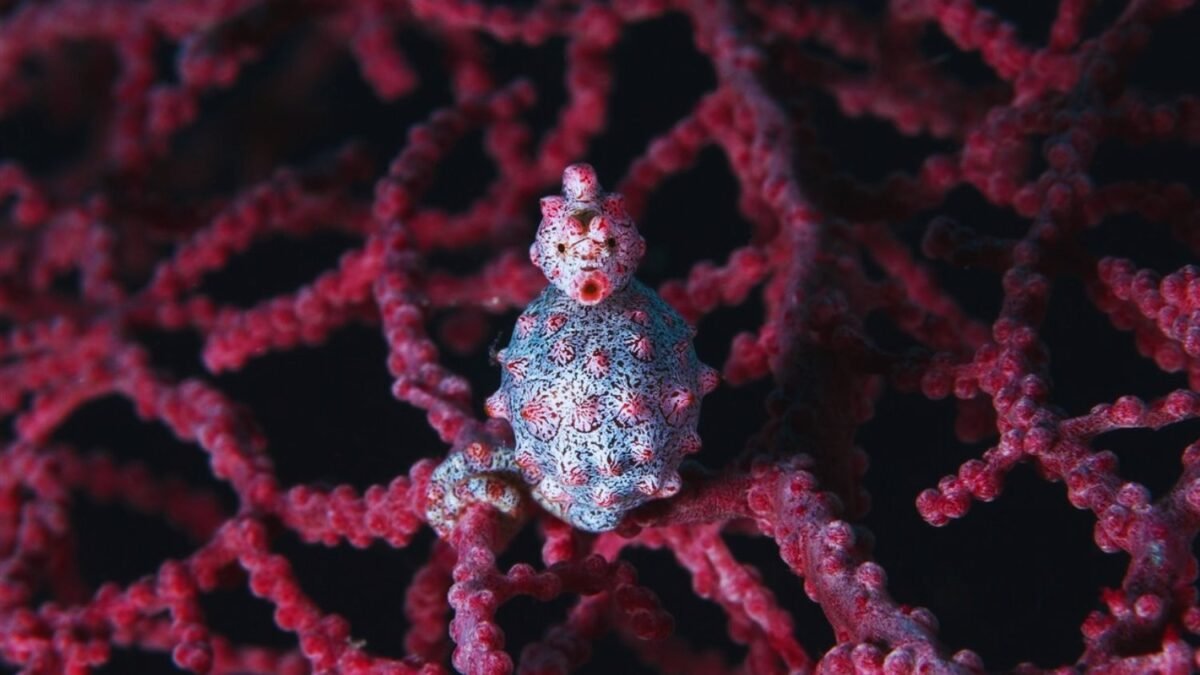Over the years, it was commonly believed that achieving complexity was the key to camouflage. However, this seahorse revealed that simplicity was its true secret.

Among the reefs of the western Pacific, hidden in corals that resemble living sculptures, a tiny and enigmatic creature thrives. The pygmy seahorse, known for its small size and elusive nature, has captured the attention of researchers. But what makes it truly unique is not what it possesses, but rather what it has lost: hundreds of genes that, upon disappearing, molded an organism designed not to be seen.
### A Camouflage Woven by Absence
The evolution story is often told as a tale of additions, but the pygmy seahorse has shown that sometimes it works the other way around. Contrary to previous beliefs, the camouflage of the pygmy seahorse was not built through additional genetic adaptations, but rather through a radical pruning of its genome. A study led by a German-Chinese team identified the loss of at least 438 complete genes and the inactivation of another 635.
This “emptying” allowed the animal to adapt extremely to its environment: a body covered in nodules that mimic the coral polyps of Muricella and a coloration capable of blending seamlessly with its habitat. Its survival depends on this invisibility: with a length of just two centimeters, being seen would mean being devoured.
### The Shape of the Head and the Vanished Gene
One of the most striking differences lies in its face. Unlike other seahorses, this pygmy species has a short and round snout instead of an elongated one. The cause: the complete disappearance of the hoxa2b gene, a crucial regulator in craniofacial development.
This genetic alteration maintains the head in a permanently juvenile state, with proportions that match the coral nodules. The result is a camouflage that appears to be precision-designed, but is actually a consequence of genetic suppression.
### Redesigned Skin and Immune System
Genetic loss also impacted the skin, which, instead of growing smooth and homogeneous, developed protrusions that mimic the shapes of coral. Researchers suggest that this transformation could be due to the elimination of genetic “switches,” DNA fragments that regulate when certain traits are activated during embryonic development.
Even more surprising is its immune system: reduced to a minimum among all known vertebrates. The pygmy seahorse lacks essential genes, such as MHC, responsible for recognizing pathogens. This potential weakness is compensated for by a symbiosis with its coral host, which releases antimicrobial compounds acting as a protective barrier.
### Evolution through Discard
The pygmy seahorse presents a fascinating paradox: evolution does not always progress by adding complexity, it can also do so by subtracting. Losing genes allowed it to disappear in a world full of predators and, at the same time, redefine its reproductive strategy. In males, the weakened immune system prevents their bodies from rejecting the embryos they incubate in the abdominal pouch, one of the most well-known peculiarities of seahorses.
What was erased from its DNA proved as decisive as what remained. In that genetic void, the pygmy seahorse found the strategy that turned it into a true ghost of the ocean.






